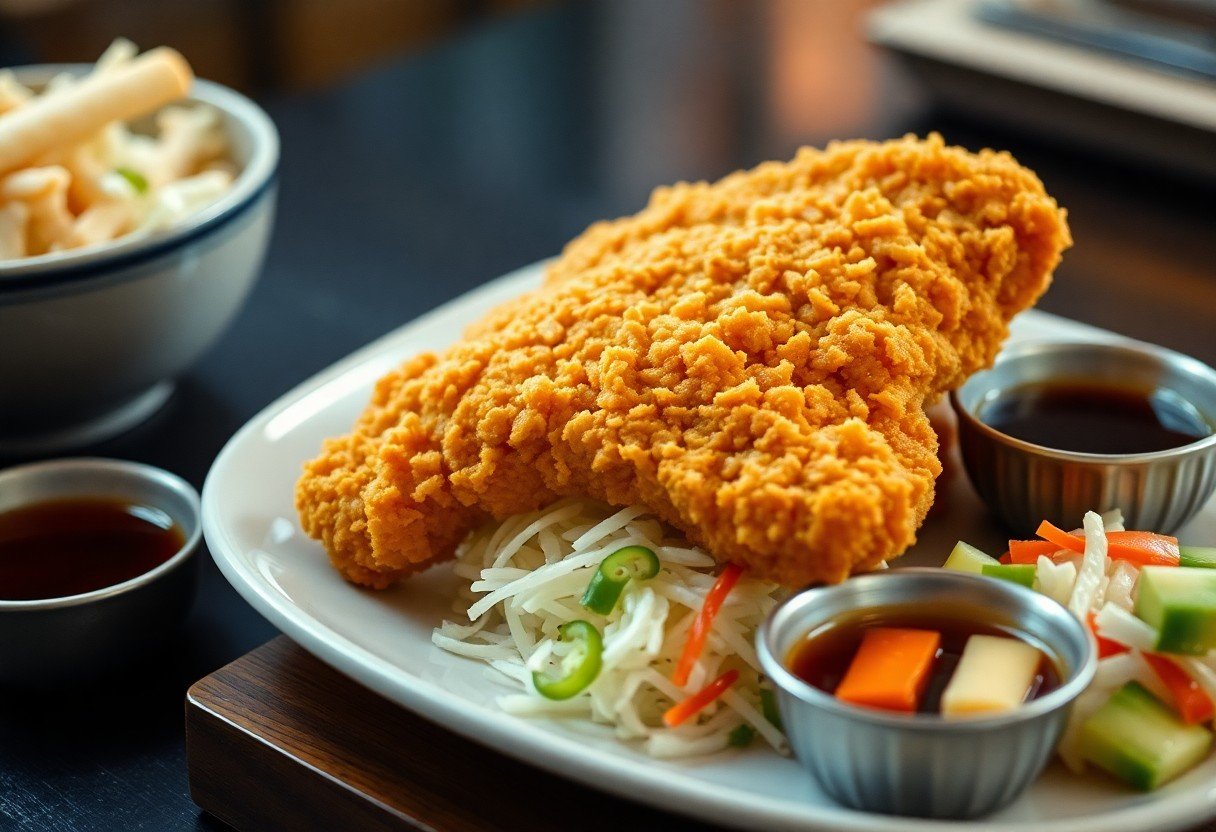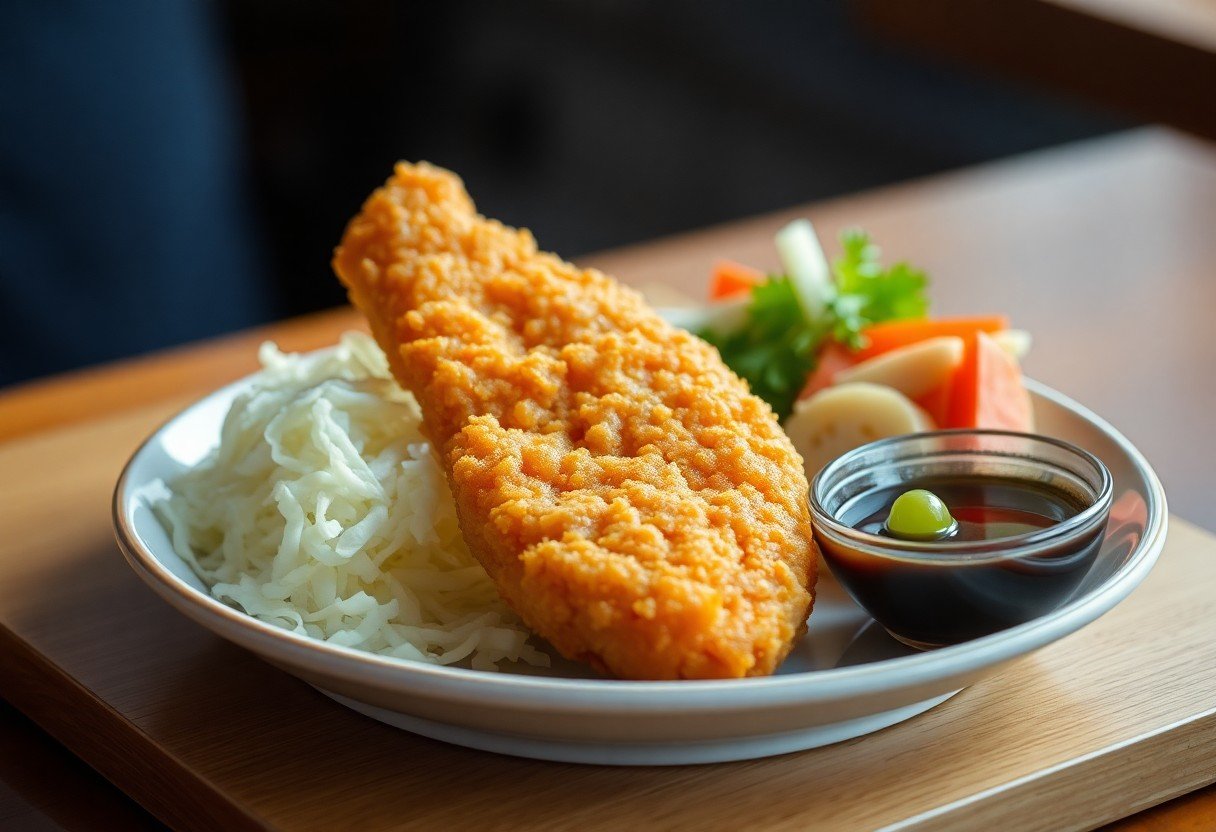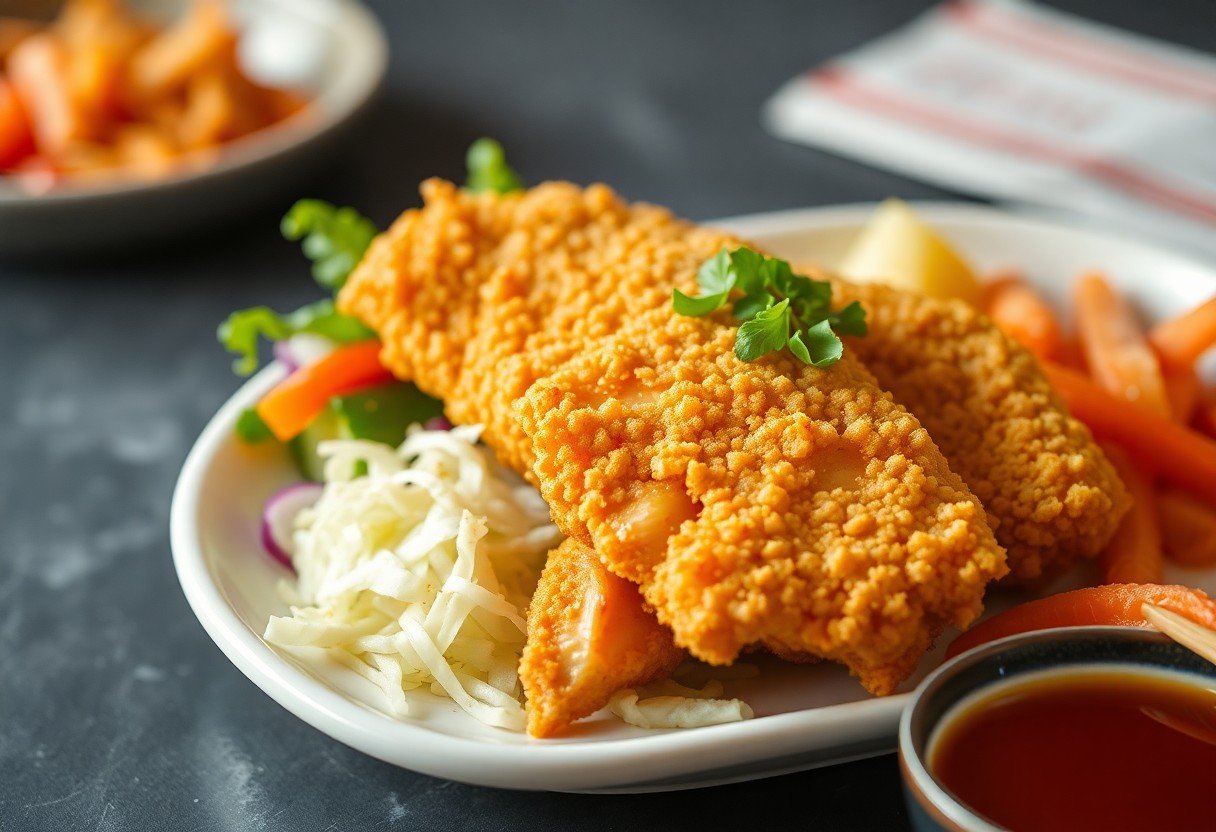Japanese Chicken Katsu – Perfecting the Crispy Coating

It’s time to elevate your cooking game with the delightful and mouthwatering Japanese Chicken Katsu! In this post, you’ll discover the secrets behind achieving that golden, crispy coating that makes this dish so addictive. With just a few simple techniques, you can impress your friends and family while enjoying a truly satisfying crunch. Get ready to take your taste buds on a delicious adventure as you learn to transform your chicken into a flavor-packed masterpiece that will have everyone asking for seconds!
Key Takeaways:
- Choose the right cut of chicken for optimal tenderness; boneless, skinless chicken thighs can add flavor and juiciness.
- Use a three-step breading process: flour, egg wash, and panko breadcrumbs to achieve a light and crispy coating.
- Ensure the oil is at the correct temperature for frying (around 350°F) to achieve a golden and crisp exterior.
- Consider seasoning each layer of the breading (flour, egg, and panko) to enhance the overall flavor of the chicken katsu.
- Let the cooked katsu rest on a wire rack instead of paper towels to prevent sogginess and maintain crispiness.

The Heart of Chicken Katsu
For those who savor the deliciousness of Japanese cuisine, Chicken Katsu holds a special place in your heart. This delightful dish features succulent chicken breast, tender and juicy, coated in a perfectly crispy crumb. Its addictive crunch paired with the savory flavor makes it unenviable to resist, whether enjoyed alone or served with a side of fluffy rice and tangy tonkatsu sauce.
What is Chicken Katsu?
Any fan of crispy fried foods will be charmed by chicken katsu. Essentially, it consists of breaded and deep-fried chicken cutlets that are tender inside and satisfyingly crunchy outside. Often served with a side of cabbage and drizzled with tonkatsu sauce, this dish brings a delightful blend of textures and flavors that keeps you coming back for more.
The Origin of This Tasty Dish
Chicken katsu has roots in the famous Western dish, “katsu,” which is short for “katsuretsu.” It was introduced to Japan by the influence of the Western culinary traditions in the late 19th century. You can experience the marrying of cultures every time you take a bite of this delicious dish.
Further, the evolution of chicken katsu reflects Japan’s adaptability and creativity in merging flavors. With its origins tied to Western influences, the dish showcases how different cultures can inspire culinary innovation. This delightful fusion has transformed into a beloved favorite, embraced both in Japanese homes and restaurants worldwide. As you enjoy each crispy bite, you can appreciate the blend of history and culinary art that makes chicken katsu a celebratory dish.
Choosing the Right Chicken
If you want perfectly crispy Japanese Chicken Katsu, selecting the right chicken is vital. Opt for chicken breast or thighs that are fresh and high-quality to ensure the best texture and flavor in your dish. The cut of chicken you use can impact the juiciness and tenderness, so it’s important to make a thoughtful choice.
Types of Chicken Cuts
On choosing your chicken, consider these popular cuts:
| Chicken Breast | Lean and easy to flatten for even cooking. |
| Chicken Thigh | More flavorful and juicy, perfect for frying. |
| Whole Chicken | Can be cut for different textures but requires more preparation. |
| Chicken Tenderloins | Very tender, quick to cook, and ideal for kids. |
| Organic Chicken | Healthier option, often with richer flavor. |
Assume that you’re looking for optimal taste; each cut has its own unique advantages.
Preparation Tips for Juicy Chicken
By properly preparing your chicken, you can enhance its juiciness and flavor. Start by marinating your chicken, allowing the flavors to penetrate deeply. Additionally, pounding the chicken to an even thickness ensures consistent cooking, preventing dry spots.
- Use a marinade with acid like lemon juice or vinegar just before cooking.
- Pound the chicken to an even thickness for consistent cooking.
- Rest your chicken for a few minutes post-cooking to retain juices.
After following these steps, your Chicken Katsu will be both flavorful and juicy!
Types of preparation techniques play a significant role in enhancing juiciness. Using brines, marinades, and seasoning can add depth to the flavor. Skipping the marinating phase can lead to a bland dish, so don’t underestimate the power of preparation methods. After ensuring your chicken is prepped well, get ready to enjoy a deliciously crispy meal!

The Secret to the Perfect Crunch
Despite its simplicity, achieving that irresistible crispy coating on your Chicken Katsu requires finesse and attention to detail. The right balance between crunch and flavor elevates this dish from ordinary to extraordinary. Unlocking the secret lies in understanding the main components and mastering the breading process, ensuring every bite is a delightful experience.
Coating Ingredients and Their Roles
At the heart of Chicken Katsu’s crispy exterior are three key ingredients: flour, egg, and panko breadcrumbs. The flour provides a sticky base that helps the egg adhere, while the egg adds moisture and richness. Finally, panko breadcrumbs deliver that signature crunch, thanks to their airy texture, ensuring every bite is satisfyingly crispy.
The Technique of Breading
Their application is what brings your Katsu to life. Start by lightly coating the chicken in flour, shaking off the excess. Dip it into the beaten egg, allowing it to cover the surface evenly. Finally, press the chicken into the panko breadcrumbs, ensuring an even layer sticks all around. This layering technique is key to achieving a consistent crunch! Skipping any step can lead to lackluster results, so take your time to ensure each piece is well coated before frying.
Plus, achieving that perfect crunch also involves the right frying technique. When you heat your oil, make sure it’s hot enough, around 350°F (175°C), to create a crispy crust while keeping the chicken moist inside. Adding too many pieces at once can lower the oil temperature, affecting the crunchiness. Maintain an organized approach by frying in batches, allowing your Katsu to shine! Each piece will emerge golden brown, with a tantalizing crisp that you’ll love.

Cooking Methods: Frying vs. Baking
To create the perfect Japanese chicken katsu, you can choose between frying or baking, each with its own advantages. Frying delivers that irresistible, golden-brown crisp that many adore, while baking and air frying offer a healthier way to enjoy this delicious dish without sacrificing flavor. Your choice will depend on the balance between indulgence and health that you’re aiming for in your meal.
Deep Frying for Crispy Goodness
To achieve that mouthwatering, crispy coating, deep frying is often the go-to method. When you immerse your breaded chicken in hot oil, the intense heat quickly seals the coating, locking in moisture and creating a crunchy exterior. The result is a deliciously satisfying texture that pairs perfectly with tangy tonkatsu sauce.
Healthier Options: Baking or Air Frying
Across many kitchens, baking or air frying has gained popularity as a healthier alternative to traditional frying. While frying can create the best crispy exterior, these methods require significantly less oil, allowing you to savor the flavors of chicken katsu without the added fat. This is especially useful if you’re looking to cut down on calories and foster healthier eating habits.
Options like baking or air frying utilize hot air circulation to create a crispy finish, which means you can still enjoy your chicken katsu while keeping it lighter on your waistline. Just remember to coat your chicken in breadcrumbs and a little oil for that satisfying crunch! You still indulge in great flavor while being mindful of your health, making it an excellent compromise for your dinner plans.
Sauce and Sides: A Perfect Pairing
After mastering the art of chicken katsu, elevating your dish with the right sauce and sides is vital. The rich, tangy flavors of sauces can beautifully complement the crunchy coating while the right sides can enhance your dining experience. Pair your katsu with fresh vegetables or a light salad for a delightful balance, making every bite even more satisfying.
Traditional Tonkatsu Sauce
Above all, the traditional tonkatsu sauce is a must-have for your katsu dish. This luscious blend of fruits and vegetables, combined with vinegar and spices, brings a delightful sweetness and depth of flavor that contrasts perfectly with the crispy chicken. Drizzle it generously over your katsu for a truly authentic experience!
Side Dishes to Complement Your Meal
After you’ve prepared your crispy chicken katsu, the next step is selecting the right side dishes. A classic choice includes a simple cabbage salad, which adds a refreshing crunch to each bite, while a bowl of steamed rice can help soak up any leftover sauce. For those who want to try something different, consider serving your katsu with pickled vegetables for a tangy contrast or a warm miso soup to round out your meal.
Sides play an vital role in harmonizing the meal at your table. You can effortlessly enhance your katsu experience by incorporating fresh, vibrant ingredients. Think of colorful napa cabbage lightly dressed in a tangy vinaigrette that adds both texture and flavor, or a serving of Japanese pickles for that zesty kick. If you want a heartier option, steamed rice with a dash of sesame could become your favorite go-to accompaniment, creating a delightful balance with each crispy bite of katsu.
Tips for Serving and Enjoying
Many people love to elevate their dining experience with these tips for serving and enjoying Chicken Katsu. Consider pairing your katsu with:
- Rice – white or fried, for a satisfying base
- Tonakatsu sauce – a sweet and tangy complement
- Shredded cabbage – for freshness and crunch
- Pickled vegetables – to enhance the flavors
After mastering the art of serving, you’ll be set for a delightful meal!
Plating Your Chicken Katsu
Serving Chicken Katsu beautifully enhances your dining experience. Use a large plate and artistically arrange the crispy katsu alongside a scoop of fluffy rice and vibrant shredded cabbage. Drizzle a generous amount of tonkatsu sauce over the chicken for an appealing look, and garnishing with sesame seeds or green onions adds a touch of elegance.
Best Ways to Enjoy Leftovers
Your leftover Chicken Katsu can be just as delightful as the first serving. Try reheating it in an oven for that signature crispiness, or transform it into a delicious donburi by slicing the katsu over rice and adding a runny egg.
Due to its versatility, leftover Chicken Katsu can be repurposed in so many ways. You can chop it up for a katsu sandwich, stir it into fried rice, or toss it in a salad for a quick and tasty meal. Keep in mind that ensuring the katsu is reheated to a safe temperature is important for your health, so always love your leftovers wisely!
Conclusion
So, as you take on the delightful task of perfecting your Japanese Chicken Katsu, embrace the joy of creating that crispy coating. With a bit of practice and your personal touch, you can transform this dish into a mouthwatering experience that’s sure to impress. Dive into the process, enjoy the flavors, and make it yours – because every bite is a celebration of your culinary journey!